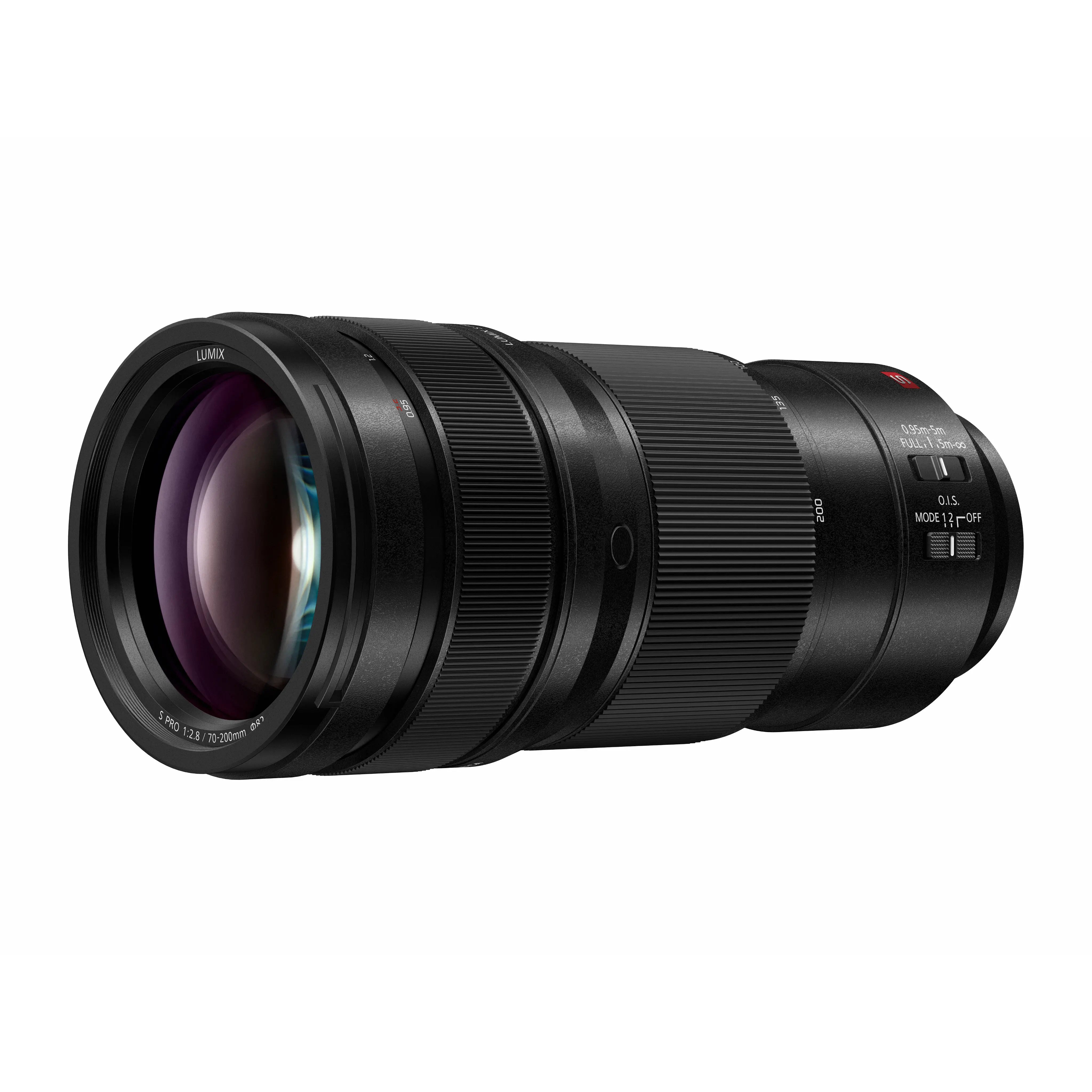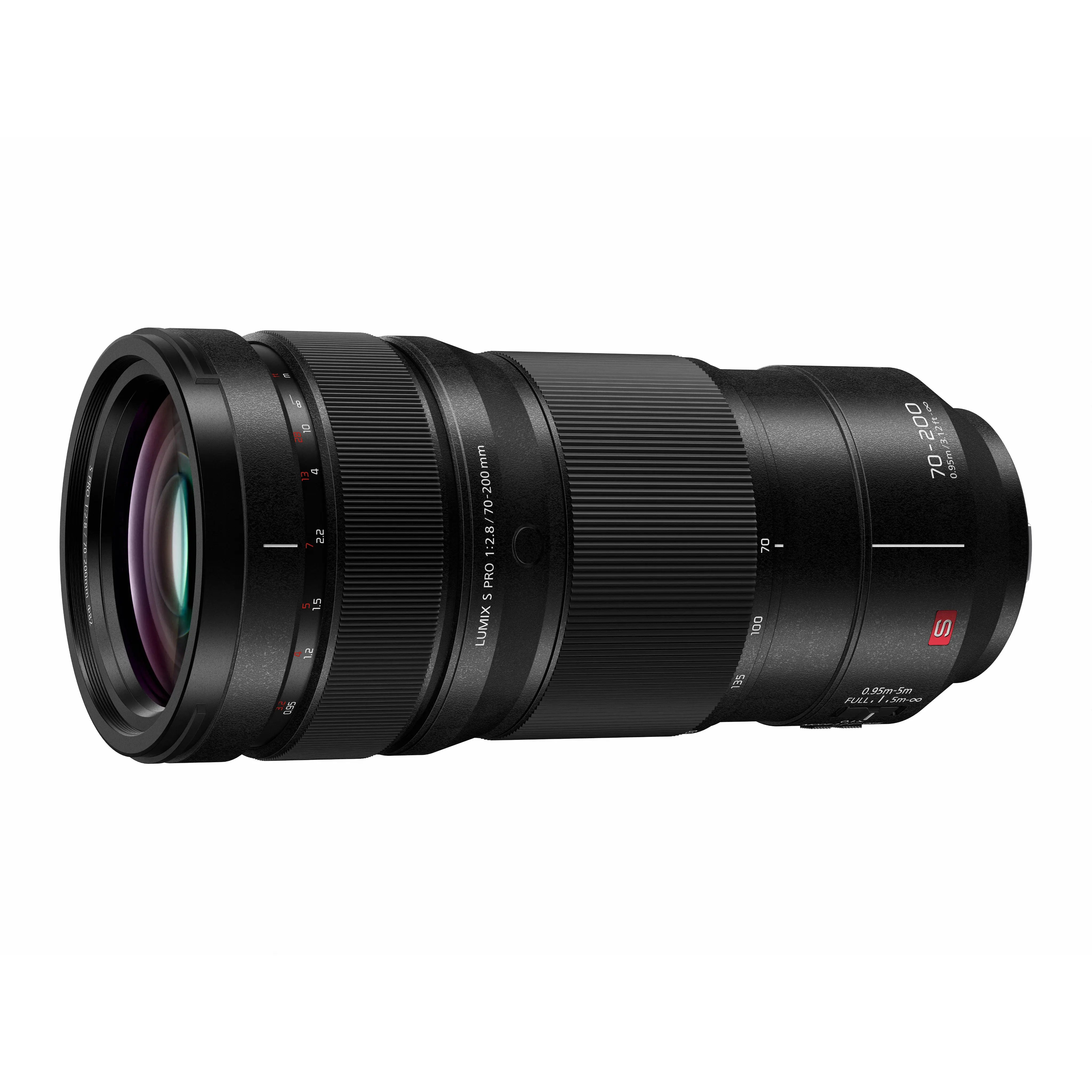LUMIX 5-Year Extended Warranty Offer
 Great news for LUMIX S Series customers!
Great news for LUMIX S Series customers!
From 14th March 2025 to 31st March 2026, purchase any eligible LUMIX S Series camera or lens and receive a free extended warranty – giving you 5 years of total cover (1-year standard + 4 additional years).
How to claim:
Register your qualifying product on the My Panasonic platform between 13th May 2025 and 30th June 2026 to activate your extended warranty.
🔗 Learn more and register here
Make sure to register in time to enjoy peace of mind with Panasonic's 5-Year Warranty on your LUMIX S Series gear.
Product Description
Panasonic Lumix S PRO 70-200mm f/2.8 L-Mount Lens
The Panasonic Lumix S PRO 70-200mm f/2.8 Lens (S-E70200E) is a professional-grade telephoto zoom lens designed for full-frame L-mount cameras. Offering exceptional optical performance and a fast, constant f/2.8 aperture, this lens is perfect for capturing stunning wildlife, sports, and portrait photography in any lighting conditions. Built for reliability and precision, it meets Leica's rigorous optical standards, delivering sharp, well-corrected imagery across the entire zoom range.

Key Features:
- 70-200mm telephoto zoom: Versatile focal range for capturing distant subjects with high detail.
- Constant f/2.8 aperture: Excellent low-light performance and beautifully smooth bokeh.
- Leica L-mount compatibility: Fully compatible with full-frame cameras such as Panasonic S1, S1R, S1H, and Sigma fp.
- Advanced optics: Features 2 aspherical lenses, 3 ED lenses, and 2 UED elements to minimise chromatic aberration and distortion.
- Dual autofocus system: Fast, precise AF performance with a combination of linear and stepping motors.
- Optical Image Stabiliser (O.I.S.): Provides enhanced stability for sharp images even in low-light conditions.
- Weather-sealed design: Dust, splash, and freeze-resistant for professional use in challenging environments.
- Rounded 11-blade diaphragm: Creates smooth, pleasing bokeh.
- External tripod mount included: Ensures stable shooting, especially when using the lens with a tripod.

Exceptional Telephoto Performance
The Panasonic Lumix S PRO 70-200mm f/2.8 is a long-reaching telephoto lens designed to capture sharp, detailed images of distant subjects. Whether you're photographing wildlife, sports, or portraits, this lens offers versatility and flexibility, allowing you to zoom in with precision. The constant f/2.8 aperture ensures excellent performance in low light while providing the ability to create stunning bokeh for subject isolation.

Advanced Optics for High-Quality Imagery
The optical construction includes 2 aspherical lenses, 3 ED (Extra-Low Dispersion) lenses, and 2 UED (Ultra Extra-Low Dispersion) elements. These elements work together to reduce chromatic aberration and distortions, resulting in high-resolution, well-corrected imagery with sharpness and accurate colour rendering throughout the zoom range.

Dual Autofocus and Image Stabilisation
The dual autofocus system combines a linear motor and a stepping motor, delivering fast and precise focusing performance, making it ideal for capturing fast-moving subjects. The integrated Optical Image Stabiliser (O.I.S.) ensures sharp images even when shooting handheld in low-light conditions. Additionally, the 5-Axis Dual I.S. 2 technology can be used with compatible Lumix S-series cameras, further enhancing image stability.

Built for Professional Use
Designed for the demands of professional photographers, the Lumix S PRO 70-200mm f/2.8 features a robust, weather-sealed construction. It is dust, splash, and freeze-proof, allowing it to perform in harsh conditions, even at temperatures as low as -14°F (-10°C). The lens also comes with an external tripod mount, providing added stability during extended shooting sessions.

Capture exceptional images in any environment with the Panasonic Lumix S PRO 70-200mm f/2.8 L-Mount Lens, offering professional-grade performance, advanced optics, and rugged durability for photographers and videographers.
Try The Kit - Lumix Loan

Try Before You Buy – Free Next Day Delivery
Test selected Lumixgear with a 48-hour free trial or hire for up to 7 days at a low cost. Book anytime via the 24/7 live system.
How It Works:
-
Book Online – Choose your dates and reserve your kit.
-
Pay Deposit – Fully refundable when gear is returned in good condition.
-
Fast Delivery – Shipped securely or collect in-store.
-
Easy Returns – Use the original packaging and pre-paid label.
For more information and to book, visit https://lumix.trythekit.com/
Payment & Security
Your payment information is processed securely. We do not store credit card details nor have access to your credit card information.





















